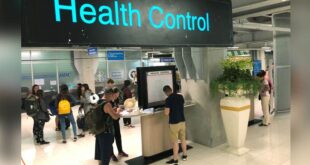We have written numerous times about Ebola and the situation in the Democratic Republic of the Congo (Congo). The virus is not slowing down and according to the World Health Organization (WHO) the threat of cross border spread of the Ebola disease is very real.
As of 28 July 2019, there are 2671 confirmed cases and 1790 of those has resulted in death according to the World Health Organization’s daily sitrep on Ebola.
The Congo’s neighboring countries continue to put in place early detection methodology to stem the cross border spread of Ebola. The WHO is urging travelers not be quarantined, and that borders not be closed. A bit of counter intuitive thinking in play, their recommendation continues how to do so moves individuals to informal border crossings and out of the view of those in place to conduct early detection.
They do however urge anyone with the Ebola virus not to travel.
In October 2018, we highlighted how we expected Ebola outbreak to continue and the likelihood of Ebola spreading beyond the borders of the Congo.
We recommend you read the post and take in the visualization of number of countries which are interconnected via air with the Congo.

The WHO provided the following guidance
Exit screening at international airports of affected country
- Exit screening is recommended at international airports in affected countries (currently only the Democratic Republic of the Congo). This includes non-invasive temperature screening, health checks and observations, risk communication and information sharing to travellers, conducted by suitably qualified and trained public health authorities. If a traveller presents with signs or symptoms such as high fever, an additional assessment should be undertaken of the risk that the illness may be caused by Ebola virus disease. Those that meet specified criteria of suspected Ebola virus disease*, should be referred to specialist medical care with appropriate infection, prevention and control precautions, and only where appropriate, laboratory testing to confirm or exclude Ebola virus disease.
- If a traveller or crew member presents with signs or symptoms related to EVD or is considered to be a high-risk contact of an EVD case (as determined by public health authorities conducting exit screening), the transportation company is advised to seek medical clearance from public health authorities prior to embarkation.
- If a person who has been exposed to Ebola virus and developed signs/ symptoms while on board of a commercial flight or other mode of transport, such patients should seek immediate medical attention upon arrival, and then be isolated to prevent further transmission. Although the risk to fellow travellers in such a situation is very low, contact tracing is recommended in such circumstances. Guidelines for cabin crew for managing a suspected case of communicable disease on board, issued by the International Air Transport Association, should be implemented by cabin crew.
 Travel Securely Securely Travel
Travel Securely Securely Travel


